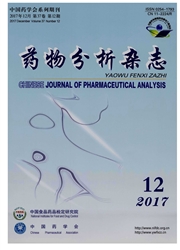

 中文摘要:
中文摘要:
Hyperlipidemia is considered to be a high lipid level in blood,can induce metabolic disorders and dysfunctions of the body,and results in some severe complications.Therefore,hunting for some metabolite markers and clarifying the metabolic pathways in vivo will be an important strategy in the treatment and prevention of hyperlipidemia.In this study,a rat model of hyperlipidemia was constructed according to histopathological data and biochemical parameters,and the metabolites of serum and urine were analyzed by UPLC-Q-TOF/MS.Combining pattern recognition and statistical analysis.19 candidate biomarkers were screened and identified.These changed metabolites indicated that during the development and progression of hyperlipidemia,energy metabolism,lipid metabolism,amino acid metabolism and nucleotide metabolism were mainly disturbed,which are reported to be closely related to diabetes,cardiovascular diseases,etc.This study demonstrated that a UPLC-Q-TOF/MS based metabolomic approach is useful to profile the alternation of endogenous metabolites of hyperlipidemia.
 英文摘要:
英文摘要:
Hyperlipidemia is considered to be a high lipid level in blood,can induce metabolic disorders and dysfunctions of the body,and results in some severe complications.Therefore,hunting for some metabolite markers and clarifying the metabolic pathways in vivo will be an important strategy in the treatment and prevention of hyperlipidemia.In this study,a rat model of hyperlipidemia was constructed according to histopathological data and biochemical parameters,and the metabolites of serum and urine were analyzed by UPLC-Q-TOF/MS.Combining pattern recognition and statistical analysis.19 candidate biomarkers were screened and identified.These changed metabolites indicated that during the development and progression of hyperlipidemia,energy metabolism,lipid metabolism,amino acid metabolism and nucleotide metabolism were mainly disturbed,which are reported to be closely related to diabetes,cardiovascular diseases,etc.This study demonstrated that a UPLC-Q-TOF/MS based metabolomic approach is useful to profile the alternation of endogenous metabolites of hyperlipidemia.
 同期刊论文项目
同期刊论文项目
 同项目期刊论文
同项目期刊论文
 期刊信息
期刊信息
